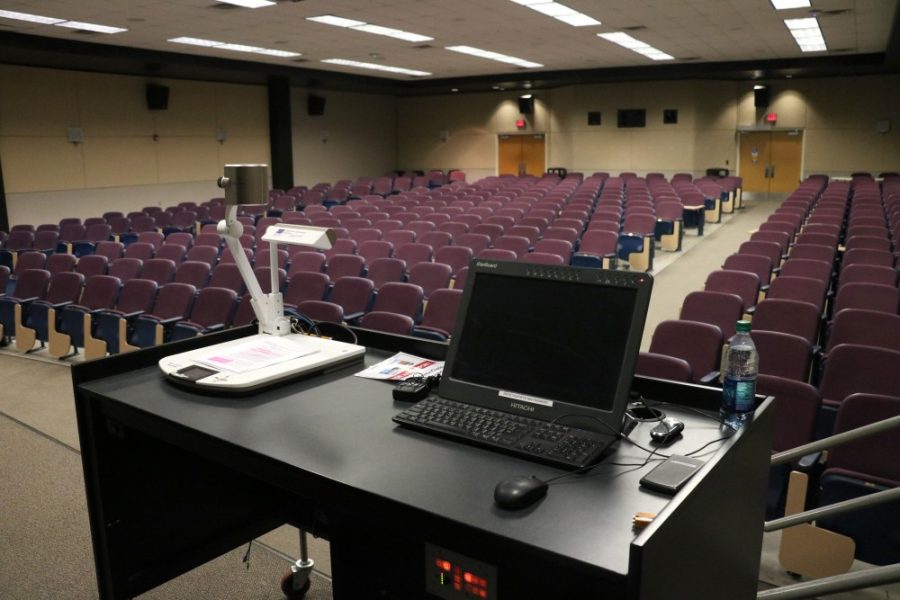As the semester comes to an end, many may be thinking about what they would have done better to receive the grade that they wanted in a course. People work hard to achieve the grades they earn, yet the key is to identify early on what tools will be most beneficial for you.
John Jewett is an associate professor at the University of Arizona and his research focus is in biochemistry and organic chemistry. Vicente Talanquer is a distinguished professor at the UA as well. He specializes in education in the chemistry and biochemistry departments.
Both qualified professionals gave feedback on how to prepare for certain types of challenges when studying. Jewett suggested that study groups are a great method when preparing for exams. He especially saw that “students who work in study groups where all members discuss, participate and challenge each other tend to show a higher level of success.”
Being in a study group allows for individuals to defend their notions of why certain answers are valid. This component creates a challenge that becomes greatly beneficial on exams.
As for Talanquer’s advice on how to prepare, spacing out times to study throughout at least a few days before is key. Waiting until the last minute to study would not be helpful thus setting times for several days before an exam to study and ensure that students understand the material would be better than cramming.
Using the spacing effect is great, yet there are other tools that should be taken advantage of. Typically, professors have office hours and supplemental instruction sessions that could be used to ask questions. Engage in daily absorption of material so there is not as much stress towards the end to try to comprehend what is going on.
“The UA Website for the Learning to Learn series lists several studying strategies proven to be effective in helping students succeed not only in science courses but in all areas,” Talanquer said.
Both Jewett and Talanquer said they have seen that cramming does not typically work for students unless on rare occasions. Another notion that has been seen by Talanquer as not as effective is simply memorizing material. Application must be practiced and using a variety of different methods to study has proven helpful.
RELATED: Knocking down the COVID-19 disparities through university community partnerships
As for online resources for studying, Jewett recommends ChemDraw. It is a great website — free for UA students — that allows students to sketch molecules onto a program that will name molecules for individuals.
There are a variety of other features to ChemDraw such as color-coding certain parts of the molecule and labeling atoms. This makes writing up lab reports much more headache-free.
Talanquer recommends Khan Academy as a supplement to lectures as well as a variety of other resources which have links down below:
phet.colorado.edu — PhET is a simulation-based learning tool for all sciences.
libretexts.org — LibreTexts platform includes free resources for chemistry.
merlot.org/merlot/index.htm — Merlot is great for students and instructors.
molview.org — MolView brings molecules to life in 3D, which helps students visualize molecules that are featured in readings or in lectures.
Online sites can be quite helpful, but sometimes having something tactile may be preferred. For chemistry courses that are heavy in abstract concepts, it is helpful for some students if there is a physical 3D molecule in their hands. This way the individual can rotate the molecule and be able to understand the types of bond formations and symmetry.
Jewett said he believes that a small mobile kit would be beneficial. The reason why smaller kits are preferred is the accessibility to bring the kits anywhere, such as during office hours or while using them through Zoom meetings.
Jewett said he likes the kits that are sold by the Chemistry Club on campus as the kits are practical and the profits go towards a fundraiser. The upside is that “the cost of the kit is about the same if you buy it from them or get it online, pay for shipping (which you generally have to do for those kits) and wait the two weeks for it to arrive.”
Through the years, Jewett has seen the benefits that have come from students using the modeling kits. Every student has their own unique way of understanding material best, thus how much benefit can be gained from purchasing a kit is dependent on the student’s needs. An alternative to a physical model kit is 3D simulation goggles, but those may cost more.
Talanquer said he believes that students benefit from a variety of different sources. He noted that “what is important is for them to learn to translate between different representations on scientific models and the more diverse representations they encounter and are asked to use and meaningfully manipulate different types of representations of the same systems.”
Follow Briana Aguilar on Twitter









